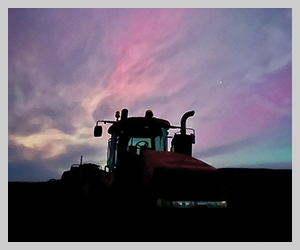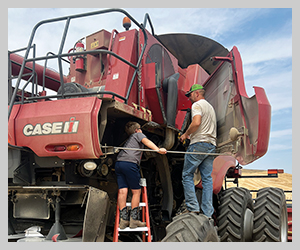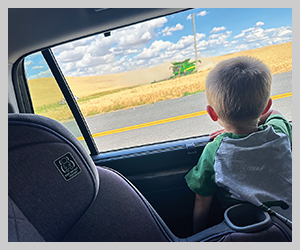
A common theme played out over the decades is that the lack of working capital and financial liquidity is often the choke point for financial and economic sustainability. This has been observed numerous times over the years in governments, households, and businesses. The financial stress of inadequate liquidity often comes very quickly.
The economic environment ahead in the agriculture industry has underpinnings of a possible financial liquidity crunch. Inflated input costs remain very sticky given the energy-centric agriculture industry. Interest rates have doubled and appear to remain elevated until the dragon of inflation is slain. A financial liquidity crunch for any agricultural enterprise could be quickly in the making with a sudden or prolonged price decline with elevated costs and interest rates. Mismanaged strategies or actions, coupled with a weather or black swan event, can quickly lead to an increased need for liquidity. What is the game plan for navigating these potential calamities?
Working capital plan
A high priority when monitoring financial statements later this year will be to analyze the top half of the balance sheet. Current assets are assets with a life less than one year, and current liabilities are obligations due within one year. This area of the balance sheet will be the first line of defense should a negative profit or cash-flow situation occur. Of course, the degree of severity and duration of the negative situation both need to be factored into the equation.
Then, one needs to examine the quality and quickness to cash of current assets in alignment with current liability obligations. For example, what is the quality of inventory? Can accounts receivable be collected? What amounts do you have in cash? What is being allocated to prepaid expenses, and how long are they committed?
To the other side of the balance sheet, one must determine the timing and obligation of debt service, paying down lines of credit, and accounts payable. This is where a marketing and risk management plan review can be extremely useful in financial liquidity analysis. In this analysis, accrual expenses and income tax obligations need to be considered. Another factor some leave out of the equation is family living expenses and personal withdrawals.
Capital expenditure plan
A critical part of the working capital plan is an outline of capital expenditures, otherwise known as CapEx. The lure of tax savings at the end of the year with machinery or facility purchases can result in a liquidity crunch months or even years later if the purchase is not well thought out.
In this analysis, one needs to examine the needs versus wants. This is where an analysis of repair bills, technology obsolescence, and timeliness in crop and livestock management can provide data for objective, critical thinking. How will the payments of these capital expenditures occur? If a short or extended period of cash flow deficits were to occur, how would it draw down liquidity or working capital reserves, and what are the liquidity reserves available?
Working capital generation
Working capital can be generated in two ways. Building working capital reserves through profits and retained earnings after income taxes is the preferable method. If equity is available, some producers will restructure debt to build working capital. However, with a debt restructuring comes the obligation to provide a well-thought-out working capital plan to preserve a reasonable amount as a financial bridge until the business is in a position to generate working capital.
Through a spreadsheet analysis, simulations of profit and loss scenarios can provide a burn rate analysis. For example, if the farm or ranch has $700,000 in working capital and $350,000 in potential losses, the working capital burn rate would be two years. The closer this burn rate is to one year or less, the more a sense of urgency is needed in the working capital area.
How much working capital is enough?
Two key ratios can be utilized to assess your working capital readiness as a business. The current ratio is the standard metric used by most agricultural lenders to determine the sufficiency of working capital. Current assets are divided by current liabilities to calculate the current ratio. For example, if you have $700,000 in current assets and $350,000 in current liabilities, then the current ratio would be 2:1. This can be considered strong or a “green stoplight.” The yellow or caution light area would be greater than 1.25:1 and less than 2:1. Those with a current ratio of less than 1.25:1 will need to closely monitor cash flow and profits. Addressing deficits in working capital needs to be a high priority. In this analysis, a risk management plan and crop and other insurances need to be considered.
Another popular metric that is utilized is working capital divided into total farm expenses. For example, if working capital is $250,000 and total farm expenses are $1 million, then the ratio would be 25%. In other words, 90 days of yearly expenses could be generated within the business through working capital. If one examines the FINBIN data, published by the University of Minnesota, the top 20% of profitable producers maintain this metric above 40%. The bottom 20% of producers have just over 10% of total farm expenses as working capital. The “green light” area for this metric would be over 25%. A rating of “yellow light” would be between 10 and 25%. The “red light” area or a sense of urgency would be less than 10%.
Killers of working capital plans
Failing to execute and monitor a risk management and marketing plan can put working capital at risk. This could range from production risk to insurance coverages including crop and livestock, health, property, and other associated insurances.
The inability to develop and monitor the family living budget separate from the farm budget can drain working capital. Too many individuals living off farm and ranch earnings could be another issue. Nonfarm capital expenditures purchased in good times, otherwise known as killer toys or killer experiences, can also be an issue.
Complacency, as a result of government payments and increases in land values that can cover up mistakes, can lower the priority of working capital plans. Remember, when the tide goes out, one finds out who is naked or vulnerable!
Positives of a working capital plan
Working capital allows for the opportunity to take advantage of timely marketing and cash discount opportunities. All of the little things can mean a lot to the bottom line. Working capital is the shock absorber for pension and wealth gains knowing that you may not be required to sell long-term assets at a discounted value to generate working capital. A working capital plan can provide a sense of security to be able to sleep at night knowing that you have a backup plan or “Plan B.”
Navigating economic cycles requires prudence with a focus on working capital levels in both the business and household. Whether it is the weather or finances, the old adage “do not be scared, be prepared” is so appropriate!
Dr. David Kohl is an academic hall-of-famer in the College of Agriculture and Life Sciences at Virginia Tech in Blacksburg, Va. Dr. Kohl is a sought-after educator of lenders, producers and stakeholders with his keen insight into the agriculture industry gained through extensive travel, research and involvement in ag businesses. This content was provided by AgWest Farm Credit.












